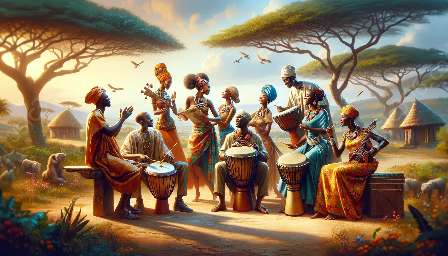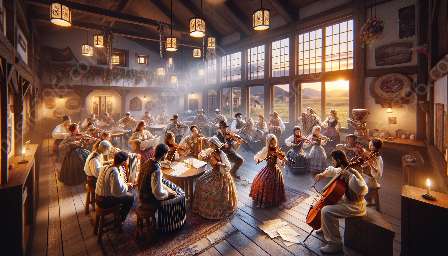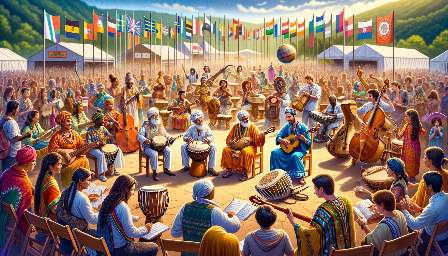Africa is a continent with a rich tapestry of diverse cultures, and this diversity is beautifully reflected in its vocal music traditions.
From traditional chants to contemporary genres, African vocal music encompasses a wide range of styles, each with its unique characteristics and significance. This article explores the variations in African vocal music, shedding light on its cultural, historical, and musical dimensions, as well as its impact on the broader landscape of world music.
Traditional African Vocal Music
Traditional African vocal music forms the foundation of the continent's musical heritage. It encompasses a wide array of styles, including chants, work songs, lullabies, and ceremonial music, each of which serves specific cultural and communal functions.
One prominent feature of traditional African vocal music is call-and-response, a dynamic interaction between a lead singer and a group of respondents. This participatory form of music-making is integral to many African musical traditions, fostering a sense of unity and collective expression within communities.
The vocal techniques employed in traditional African music are as diverse as the continent itself. From intricate vocal ornamentation to powerful rhythmic patterns, singers use their voices to convey emotions, narratives, and spiritual connections, creating a multi-dimensional sonic landscape that reflects the depth of African cultural expression.
Regional Variations
Across Africa's vast expanse, distinct regional variations in vocal music emerge, each shaped by unique linguistic, historical, and cultural influences. In West Africa, for example, the griot tradition plays a central role, with storytellers and musicians preserving oral histories through their powerful vocal performances.
In Central and Southern Africa, polyphonic singing is a hallmark of vocal traditions, with harmonies intertwining to create lush, complex textures. In East Africa, vocal music often incorporates vocal ululations, yodeling, and melismatic ornamentation, reflecting the region's diverse linguistic and musical practices.
Furthermore, within each region, individual countries and cultural groups contribute their own distinct vocal styles and repertoire, demonstrating the vibrant mosaic of African vocal traditions.
Contemporary Expressions
While traditional vocal music forms the bedrock of African musical expression, contemporary genres and innovations continue to enrich the continent's sonic landscape. From the vibrant rhythms of Afrobeat to the soulful melodies of South African jazz, African vocal music has evolved and intersected with global influences, resulting in a rich tapestry of contemporary expressions.
Contemporary African vocalists draw inspiration from their heritage while embracing modern musical idioms, creating music that reflects the dynamism and creativity of African cultural production. Through genres like Afro-pop, Afrobeats, and fusion styles, African vocal music resonates with audiences worldwide, contributing to the global tapestry of world music.
Impact on World Music
African vocal music holds a prominent position within the broader landscape of world music, influencing and shaping global musical trends. Its rhythmic vitality, emotive expressiveness, and rich cultural narratives have captivated audiences and artists across continents, inspiring collaborations and cross-cultural exchanges.
Artists from other parts of the world increasingly look to African vocal traditions for inspiration, infusing their own music with African vocal techniques, rhythms, and storytelling approaches. This cross-pollination of musical ideas not only enriches global music, but also fosters greater appreciation and understanding of African cultural heritage.
As African vocal music continues to evolve and thrive, its impact on world music remains profound, resonating with audiences and musicians who recognize its enduring significance and contribution to the global musical tapestry.










































